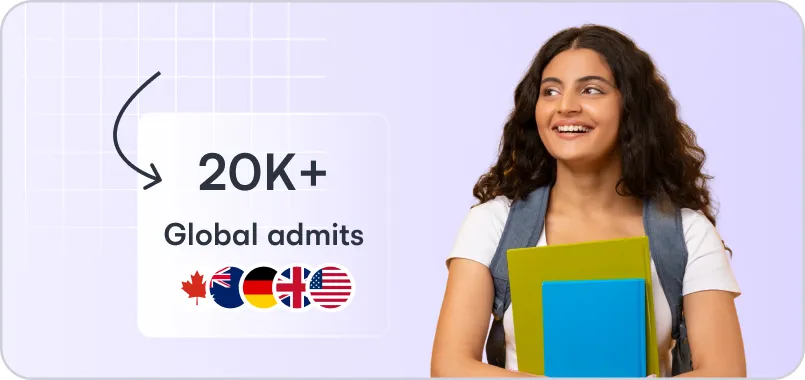Duration: 12 months per degree level
Optional Practical Training, often referred to as OPT, is a work authorization program for international students on an F-1 visa in the USA. It allows them to work in a job related to their field of study for up to 12 months per degree level.
Students can use OPT before or after graduation, but most choose post-completion OPT to gain full-time work experience. STEM graduates may qualify for a 24-month OPT extension.
Features of OPT
These are the most important features of OPT for international students on an F-1 visa:
- Post-graduation work option: Most students use OPT after finishing their degree to gain full-time work experience in the US.
- Part-time or full-time: Students can work up to 20 hours a week (part-time) or more than 20 hours a week (full-time).
- Direct link to field of study: The job must be closely related to the student’s academic major.
- No job offer needed at application: You can apply for OPT without having an employer lined up.
- Paid or unpaid roles: OPT can be used for paid positions, internships, or volunteer roles.
- Flexible timing: OPT can be used before completing your degree (pre-completion) or after graduation (post-completion).
- USCIS approval required: You must apply to the US Citizenship and Immigration Services and get an Employment Authorization Document (EAD) before starting work.
- Application fee: OPT applications have a set filing fee, which you must pay when applying.
Eligibility for OPT
Check these OPT eligibility rules first to know if you qualify for it:
- Valid F-1 Status: You must maintain a valid F-1 status when you apply.
- Full-Time Enrollment: You must have studied full-time for at least one full academic year before your program ends.
- Directly Related Work: The job must match your major or field of study.
- No Previous OPT at Same Level: You cannot have already used OPT for the same degree level.
- No Excessive CPT Use: You cannot have completed 12 months or more of full-time CPT at the same degree level.
- Apply Within the Time Window: Apply up to 90 days before your program end date and no later than 60 days after.
- Physical Presence: You must be inside the U.S. when you submit your application.
Note: You do not need a job offer to apply. Work can be paid or unpaid. You can hold more than one job, but all must relate to your major. STEM graduates may apply for a 24-month extension. You must report changes in your personal or job details to your DSO within 10 days.
Documents Required for OPT
Here’s a detailed checklist of what documents you’ll need when applying for OPT:
- Form I-765: The official Employment Authorization application form.
- OPT Recommendation I-20: Issued and signed by your Designated School Official (DSO), confirming your school’s approval for OPT.
- Valid Passport: Must be current and government-issued.
- Most Recent I-94 Record: Shows your legal entry and current status in the U.S.
- Two Passport-Style Photos: Recent, meeting USCIS size and format requirements.
- Previous EADs (if any): Copies of any Employment Authorization Documents issued to you before.
- Application Fee: USD 185 (INR 15,500) payable to USCIS by check, money order, or online payment.
- Additional for STEM OPT Extension: Copy of your STEM degree and employer’s E-Verify information, if applying for the 24-month extension.
How to Apply for OPT?
Applying for OPT is a multi-step process that begins with your school’s approval and ends with USCIS granting you work authorisation.
Here’s a clear breakdown of the OPT application at each stage:
- Step 1: Check Your Eligibility: You must be in a valid F-1 status for at least one full academic year. The job you plan to do under OPT must be directly related to your major. Apply no earlier than 90 days before your program end date and no later than 60 days after.
- Step 2: Request OPT Recommendation from Your DSO: Contact your university’s International Student Office. Complete any required forms, quizzes, or orientations. Your DSO will update your SEVIS record and issue a new I-20 with the OPT recommendation.
- Step 3: Prepare Your OPT Application: Your OPT application must include Form I-765 (Application for Employment Authorization), the OPT-recommended I-20 issued by your DSO, two passport-style photos that meet USCIS requirements, a copy of your passport’s biographical page, your most recent I-94 record, copies of any previous EAD cards (if applicable), and the application fee of USD 185 (approximately INR 15,500), along with Form G-1145 if you wish to receive e-notification updates.
- Step 4: Submit Your Application to USCIS: Online is recommended for faster confirmation. It can be done by mail, you can send to the USCIS Lockbox facility based on your state. Ensure USCIS receives it within 30 days of your DSO issuing the OPT I-20.
- Step 5: Track Your Application: USCIS will send you a receipt notice. Check your case status online using the receipt number. Processing times vary, so keep an eye on USCIS updates.
- Step 6: After Approval, you will receive your Employment Authorization Document (EAD) card. You may only start working on or after the EAD start date. Report any change in address or employment to your DSO within 10 days.
Guidelines and Restrictions for OPT
OPT gives F-1 students the opportunity to gain work experience, but it comes with specific rules you must follow to accommodate with U.S. immigration regulations:
- Eligibility: You must be in a valid F-1 status, enrolled full-time for at least one academic year, and your job must be directly related to your major. You cannot have used 12+ months of full-time CPT at the same degree level.
- Types of OPT: Pre-completion OPT for part-time during semesters or full-time during breaks. Post-completion OPT for at least 20 hours per week after graduation. STEM OPT extension for 24 months for eligible STEM degree holders.
- Application process: Request a recommendation from your DSO, file Form I-765 with USCIS within 30 days, and wait for your EAD card before starting work.
- Reporting requirements: Update your DSO within 10 days of any changes to your name, address, or employment details. STEM OPT students must also submit periodic evaluations and update their I-983 training plan.
- Unemployment limits: Maximum of 90 days without work during post-completion OPT, or 150 days total for STEM OPT (including the initial 90 days).
- Travel rules: Travel is allowed, but you must carry your EAD, a valid F-1 visa, updated I-20, and proof of employment. Leaving and re-entering on a different visa status cancels OPT.








